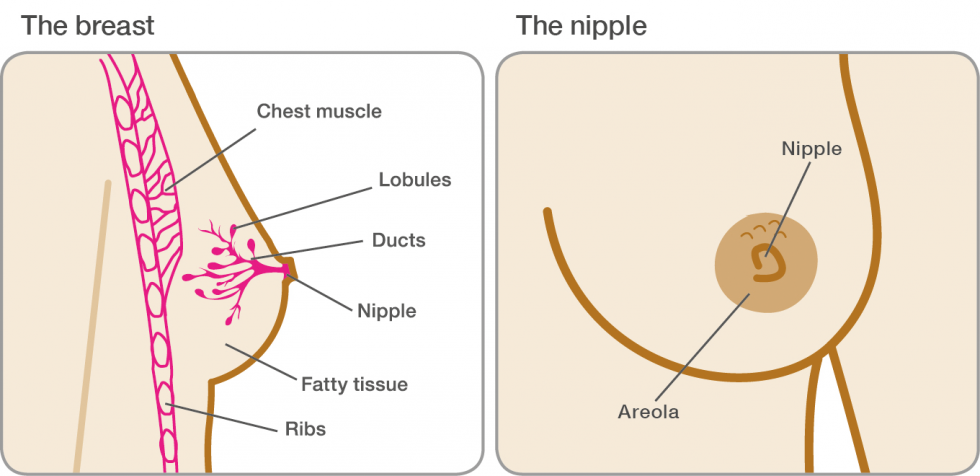
At menopause breast development ceases and the breasts atrophy. Breasts begin to form while the unborn baby is still growing in the mothers uterus.
This signals your ovaries to stop releasing eggs and produce more estrogen and progesterone.
Breast development during pregnancy. There are a number of breasts changes during pregnancy that you should expect. Growth and enlargement Around weeks 6-8 your breasts will get bigger and continue to grow throughout your pregnancy. Expect to go up a bra cup size or two.
Your breasts may feel itchy as the skin stretches and you may develop stretch marks. The hormonal changes of pregnancy help get your breasts ready for lactation. Your breasts will become heavier and denser during this time.
Your nipples will also darken. During pregnancy your breasts start producing colostrum the immune-boosting milk your baby will get when you first start nursing. During the last few months of pregnancy you may leak a small amount of this thick yellowish substance although some women start to.
Fluctuating hormones cause breast changes during pregnancy. Breast tenderness is often one of the earliest symptoms of pregnancy. According to the National Institute of.
During pregnancy a high progesteroneoestrogen ratio favours the development of alveoli but not secretion. With the delivery of the placenta the source of the large amount of circulating steroids more so progesterone is removed allowing the alveoli to respond to prolactin. Breast milk begins to form within 24 48 hours.
During pregnancy the breast undergoes both anatomic and physiologic changes to prepare for lactation. During the first trimester the ductal system expands and branches out into the adipose tissue in response to the increase of estrogen. Elevated levels of estrogen also cause a decrease in adipose tissue and ductal proliferation and elongation.
When does breast development begin. Breasts begin to form while the unborn baby is still growing in the mothers uterus. This starts with a thickening in the chest area called the mammary ridge or milk line.
By the time a baby girl is born nipples and the beginnings of the milk-duct system have formed. Breast changes continue to happen over a womans life. Fetal development three weeks after conception The fifth week of pregnancy or the third week after conception the levels of HCG hormone produced by the blastocyst quickly increase.
This signals your ovaries to stop releasing eggs and produce more estrogen and progesterone. The human breast begins to develop at six weeks gestation. At birth the mammary gland contains only rudimentary ducts that have small club-like ends which grow throughout childhood.
During puberty the breast begins to enlarge through the formation of adipose tissue and the branching and elongation of the ductal system. Many healthcare providers believe the breasts are not fully mature until a woman has given birth and made milk. Breast changes are one of the earliest signs of pregnancy.
This is a result of the hormone progesterone. In addition the dark areas of skin around the nipples the areolas begin to swell. During pregnancy a woman gains weight and her breasts enlarge.
A womans breasts grow during pregnancy usually one to two cup sizes but possibly larger. A woman who wore a C cup bra prior to her pregnancy may need to buy an F cup or larger bra while nursing. Breast Changes during Pregnancy and Lactation Period Breast changes are one of the first signs of pregnancy since these are also related to the lactation period.
There is rapid breast swelling during pregnancy. Most pregnant women experience tenderness. Pain is not the only breast-related symptom you can expect during your pregnancy.
During your first trimester you may also notice blue veins pumping. Breast development also known as mammogenesis is a complex biological process in primates that takes place throughout a females life. It occurs across several phases including prenatal development puberty and pregnancy.
At menopause breast development ceases and the breasts atrophy. Breast development results in prominent and developed structures on the chest known as breasts in. Before pregnancy the breast is predominantly adipose tissue without extensive glandular or ductal development.
Under the influence of uninterrupted and rising concentrations of estrogen progesterone and prolactin during pregnancy the breast increases in water electrolyte and fat content.
